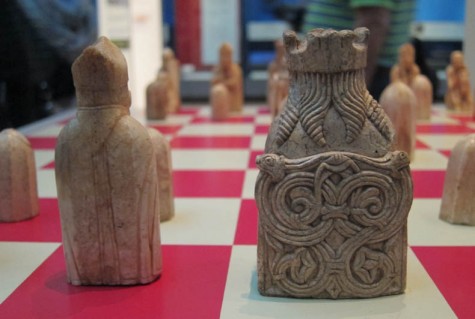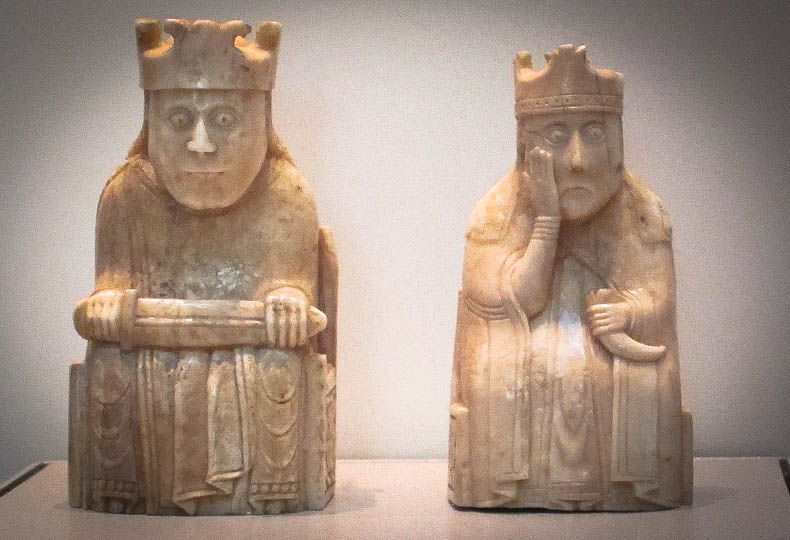Last night I was watching the movie Brave. It’s the story of a Scottish princess with exuberantly curly red hair who doesn’t want to be married to some dumb scion of a clan just because their dads are allies. She shoots arrows. There are magic spells and lots of bagpipes. It was a good thing to watch on a Sunday evening at the end of a very long week.
About 15 minutes into the movie, I noticed something familiar.
Merida’s mother picks up a chess set. “Once, there was an ancient kingdom,” she says. She carries the board and the figures over to her daughter. She holds up a king, using the chess set and some dramatic flashbacks to tell the story of “war and chaos and ruin.”
It was the chess set that looked familiar. It’s based on the Lewis chessmen, which got their name from the place they were found, on the Isle of Lewis, in the Hebrides, off the northwestern corner of Scotland. The exact place and time of their discovery didn’t get recorded, but the British Museum says it was probably in a sand dune and it was definitely sometime before April 11, 1831, when they were exhibited in Edinburgh. Eleven pieces are in Edinburgh now, in the National Museum of Scotland. The other 82 are in the British Museum.
As those numbers suggest, it’s not just one set. There are pieces from four sets, and they don’t seem to have been used. From that, experts conclude that the collection probably belonged to a merchant who was carrying them from Norway to Ireland. (The Hebrides are totally on the way.) They were made sometime around A.D. 1150 to 1200.
The British Museum is overwhelming. The first time I went as an adult, it was a rainy day during the school holidays. The Rosetta Stone had so many people standing in front of it, you could barely see the thing, let alone examine the hieroglyphics. I spent hours, wandering among crowds through rooms crammed with artifacts. By the end I could barely keep going as I tried to make myself look at more fabulous Japanese art. I was grateful for the restorative tea and scones in the atrium.
On a return visit last summer, I took my preferred approach for overwhelming museums and only looked at a few things. One was the case with the Lewis chessmen. I walked around and around it, examining the pieces. Kings sit with swords. Bishops clutch curly-topped staffs. The backs of the thrones have twisting, intertwined vines and animals. Fabric drapes gracefully. It’s stunning work.
It’s no accident that those thousand-year-old chessmen found their way into a movie; people from Pixar visited the National Museum of Scotland to photograph the chessmen and other objects. Since the movie is set in medieval Scotland, this makes a lot of sense. And using them in movies seems to be a popular move. In January I noticed that they were the basis for Ron’s living chess set in the first Harry Potter movie.
Some craftsman – yeah, I’m assuming it was a man – must have worked so hard on those walrus tusks. It’s only the outer layer of walrus ivory that looks really nice. You have to be careful how you carve it, so not too much of the secondary dentine shows. I imagine him hunched over his ivory, probably imported from Norway’s colony of Greenland, next to a fire in the long Norwegian winter, more than 800 years ago.
It must have seemed strange enough to that man that his handiwork could make it as far as Ireland. How much stranger to imagine those carefully carved horses, snakes, and bug-eyed queens on screens, large and small, around the world.
photos: Helen Fields

“The Hebrides are totally on the way” – did the author forget to end this with “dude”?